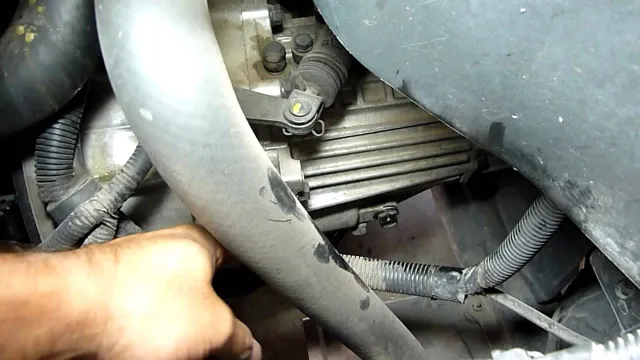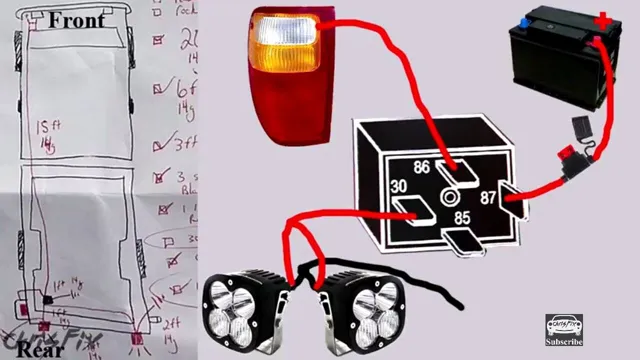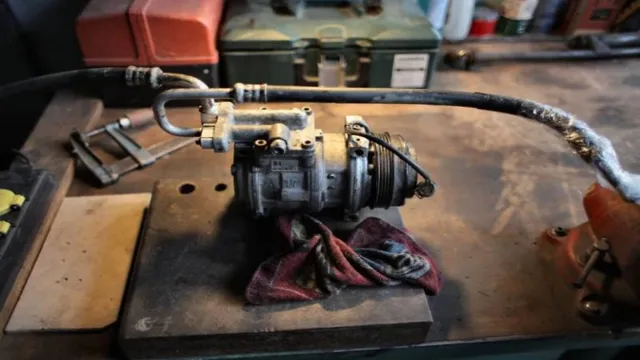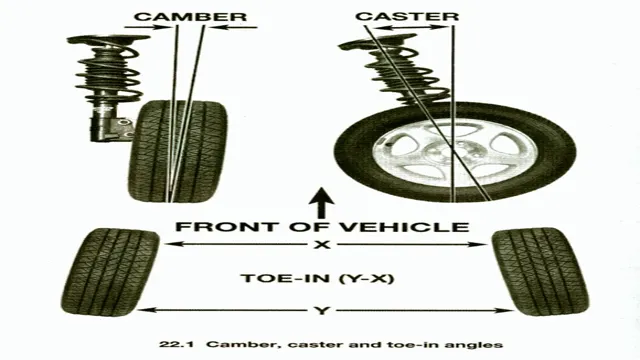The Foolproof Guide to Changing Your Manual Transmission Oil: Step-by-Step Instructions for a Smooth Ride
If you want to keep your manual transmission running smoothly, it’s crucial to change the oil regularly. Over time, manual transmission oil can become dirty, leading to decreased performance and potentially damaging the gearbox. But how do you know when it’s time to change your transmission oil, and how do you go about doing it? In this blog post, we’ll cover everything you need to know about changing manual transmission oil.
Whether you’re a seasoned mechanic or a complete beginner, we’ve got you covered. Keep reading to learn more!
Prepare Your Vehicle
Changing the manual transmission oil in your vehicle is an essential part of maintaining its health and longevity. To begin, make sure your car is parked securely on level ground. Next, locate the drain plug underneath your vehicle.
You may need to refer to your owner’s manual for its exact location. Once located, remove the drain plug and let the old oil drain out completely. After the old oil has drained out, replace the drain plug and refill the transmission with fresh oil.
It’s important to use the recommended type and amount of oil, which can also be found in your owner’s manual. Finally, check the oil level and make sure there are no leaks present. By following these simple steps, you can keep your manual transmission running smoothly for years to come.
Choose the Right Oil and Tools
Preparing your vehicle for any trip is crucial, and choosing the right oil and tools can help ensure a safe and smooth journey. When selecting oil, it’s essential to consider your vehicle’s owner’s manual and the manufacturer’s recommended viscosity. High-quality oil can reduce engine wear, improve fuel efficiency, and maintain engine performance.
Additionally, having the right tools on hand can make all the difference when it comes to safety and efficiency. A basic toolkit should include items such as a jack, lug wrench, tire pressure gauge, flashlight, and jumper cables. Don’t wait until you’re on the side of the road to realize you don’t have what you need.
Take the time to prepare your vehicle before your next adventure!
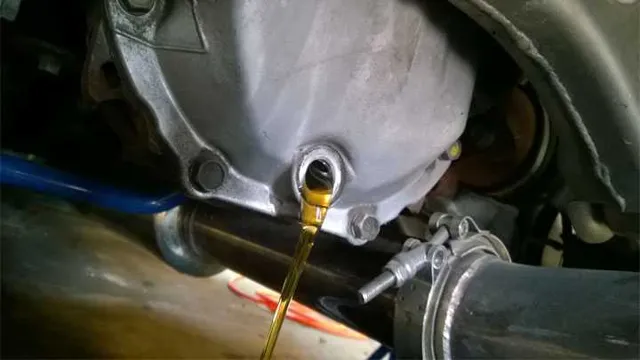
Locate the Drain and Fill Plug
Before changing your vehicle’s oil, it’s crucial to prepare it properly. The first step in doing so is to locate the drain and fill plug. The drain plug can usually be found on the lowest part of the oil pan, and the fill plug is typically located on the top of the engine.
It’s essential to ensure that your vehicle is level before draining the oil so that you can get all of the old oil out. To do this, park on level ground and use a car jack to raise the vehicle if necessary. Once you’ve located the drain and fill plugs, it’s time to gather all the necessary tools and materials.
You’ll need an oil filter wrench, a drainage pan, and a new oil filter. It’s also vital to have the correct type and amount of oil for your vehicle. Taking the time to prepare your vehicle properly will make the oil change process much more manageable and ensure that your engine is running at its best.
Drain the Old Oil
When it comes to maintaining your manual transmission vehicle, changing the transmission oil is a crucial part of ensuring its longevity and performance. To start, you need to drain the old oil from the transmission. First, locate the drain plug on the underside of the transmission and place a container beneath it to catch the old oil.
Then, using a wrench, carefully remove the drain plug and allow the old oil to drain completely. It’s essential to ensure that all of the old oil is removed before adding new oil to prevent any old oil from mixing with the new oil, which can cause problems down the line. Once the old oil has drained, you can replace the drain plug, ensuring it is tight but not over-tightened.
Remember that changing the manual transmission oil is a vital part of maintaining your vehicle, and regular oil changes can extend the life of your transmission while improving performance and fuel efficiency.
Position the Drain Pan and Open the Drain Plug
If you want to change your car’s oil, you need to start by draining the old one. Positioning the drain pan and opening the drain plug are the first steps. The drain pan needs to be in the right position to catch all the oil, especially if your car is low to the ground.
As for the drain plug, it is usually located on the underside of the car, near the oil filter. Finding it can be a bit tricky, depending on the make and model of your car. Once you locate the drain plug, you need to unscrew it and let the oil drain into the pan.
It’s important to wait until all the oil has drained out before moving on to the next step. Most cars take about 5-10 minutes to drain all the oil. In this way, you can avoid making a mess and dispose of the old oil in an environmentally friendly way.
Remember that the oil is hot, so use caution when handling the drain plug. By following these steps, you’ll be on your way to changing your car’s oil like a pro!
Let the Oil Drain Completely
When changing the oil in your vehicle, it’s important to let the oil drain completely before adding new oil. This may seem like common knowledge, but many people rush the job and don’t take the time to wait for all the old oil to drain out. This can lead to a host of problems, including reduced performance and increased wear and tear on your engine.
To ensure that you’re giving your vehicle the best care possible, always take the time to let the old oil drain out completely before adding new oil. This ensures that your engine is getting the fresh, clean oil it needs to run smoothly and efficiently. By following this simple step, you can extend the life of your vehicle and keep it running at peak performance for years to come.
Refill with New Oil
Once you’ve drained the old transmission oil, it’s time to refill with new oil. Before doing so, it’s important to consult your vehicle’s manual to make sure you’re using the correct type and amount of oil. Some manuals may even recommend changing the oil filter as well at this time.
Once you have the correct oil and filter, locate the refill plug on your transmission and carefully pour the new oil into the opening. Use a funnel to prevent any spills or messes. Keep an eye on the level of oil as you fill it up, and stop once it reaches the recommended level.
Tighten the refill plug back in place, and your transmission should be ready to go! Remember, regular maintenance like changing the manual transmission oil can help ensure your vehicle runs smoothly and efficiently.
Insert the Fill Plug and Remove the Filler Adapter
After draining the old oil, it’s time to refill your vehicle with fresh oil. Firstly, locate the fill plug which is typically located on top of the engine. Once you find it, remove the cap and insert the funnel.
Then, grab the container of new oil and begin pouring it into the funnel. It’s important to check your owner’s manual to see how much oil is recommended for your particular vehicle. After filling up the engine, wait a few minutes to allow the oil to settle down and check the dipstick to ensure you have added enough oil to the engine.
Once you’ve ensured that the oil level is correct, it’s time to remove the filler adapter from the oil filter reservoir. This step is critical before starting your car, as leaving the filler adapter in place can damage the engine. After completing these steps, your engine should run smoothly with fresh oil.
Regular oil changes can increase the lifespan of your engine, ensuring that you get the most out of your vehicle for many years to come. So, don’t ignore your car’s regular maintenance needs and get started with an oil change today!
Add the New Oil
Refilling your car’s oil is an essential part of maintaining its optimal performance. Adding fresh oil to your engine not only lubricates its moving parts but also keeps it cool and reduces wear and tear. When refilling with new oil, you should choose the right type and weight for your vehicle’s make and model.
Most manufacturers recommend synthetic or semi-synthetic oils that provide better protection and performance. Before refilling, make sure to check your car’s owner’s manual to determine its oil capacity and the kind of oil recommended. Additionally, it’s important to properly dispose of the used oil and not mix it with regular trash or pour it down a drain.
Remember, regularly checking and changing your car’s oil can extend the life of your engine and save you money in the long run.
Perform a Final Check
Now that you’ve drained out all the old oil and replaced it with fresh oil, it’s time to perform a final check to ensure everything is in working order. First, double-check the transmission oil level using the dipstick to make sure it’s at the recommended level. If it’s too low, add more oil until you reach the right measurement.
Next, check for any leaks, drips or spills around the transmission. If you find any, tighten any loose bolts or plugs. Monitor the transmission over the next few days to see if there are any further leaks or issues.
Lastly, test out your gears by taking your car for a spin around your neighborhood, feeling for any slipping, grinding, or other unusual noises. If everything seems to be running smoothly, congratulations—you’ve successfully changed your manual transmission oil and given it the care it needs to keep your ride running smoothly for years to come.
Check the Oil Level and the Drain Plug Tightness
Performing a final check before driving your car is important to ensure that everything is in good working condition. One crucial area to check is the oil level and the drain plug tightness. Without enough oil, the engine may experience problems that can cause it to malfunction or even break down.
To check the oil level, locate the dipstick, pull it out and wipe it clean, then reinsert it and pull it out again. The oil level should be between the two marks on the dipstick. To ensure the oil drain plug is tight, grab onto the plug and give it a firm twist.
If it comes loose, it needs to be tightened more. These checks only take a few minutes but can save you from costly repairs down the road. So, before starting your engine, take the time to check and top up the oil level and check the drain plug tightness, if needed, for a safer and smoother driving experience.
Conclusion
And there you have it folks, changing your manual transmission oil is as easy as shifting gears (well, almost). Remember to consult your vehicle’s owner manual for recommended oil and oil filter types, and make sure to dispose of your old oil properly. With these simple steps, you’ll have your manual transmission running as smooth as butter in no time.
Plus, you’ll even have a newfound appreciation for the inner workings of your car and the crucial role that oil plays in keeping it all running smoothly. So go ahead, roll up your sleeves, and get ready to show your manual transmission some love (and some fresh oil). Happy shifting!”
FAQs
What is manual transmission oil?
Manual transmission oil is a specialized lubricant that helps to keep the gears inside a manual transmission properly lubricated and functioning smoothly.
How often should I change my manual transmission oil?
The frequency of manual transmission oil changes can vary depending on the make and model of your vehicle. However, it is generally recommended that you change your manual transmission oil every 30,000 to 60,000 miles.
Can I use any type of oil in my manual transmission?
No, you should never use just any type of oil in your manual transmission. Using the wrong type of oil can cause significant damage to your transmission. Always consult your owner’s manual or a mechanic to ensure that you are using the correct type of oil.
How do I change my manual transmission oil?
To change your manual transmission oil, locate the drain plug underneath your vehicle and allow the old oil to drain out. Once all of the old oil has drained, replace the drain plug and refill your transmission with fresh oil. Consult your owner’s manual or a mechanic for specific instructions on how to properly change your manual transmission oil.

